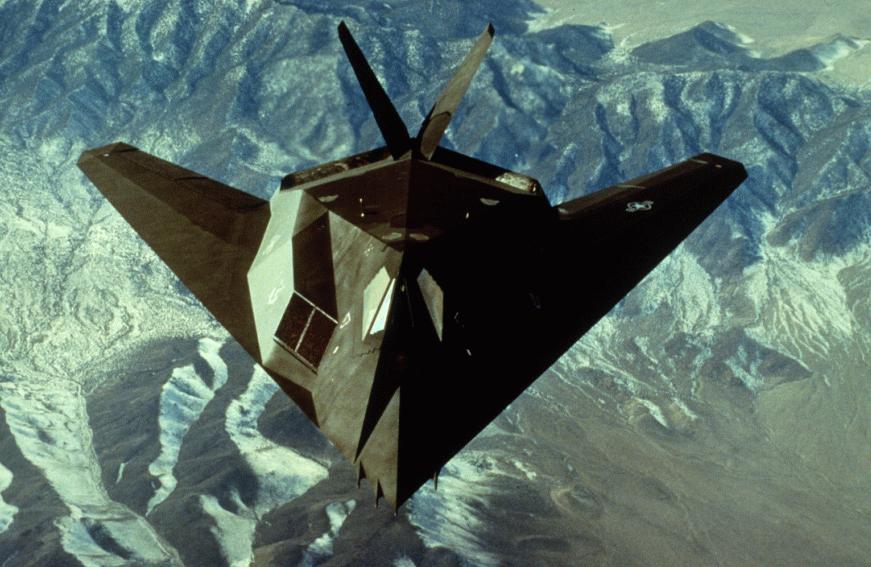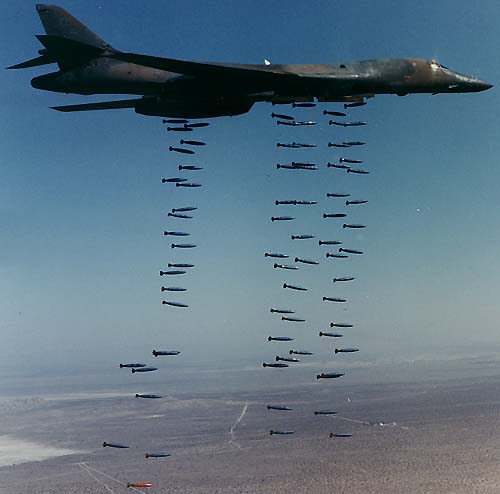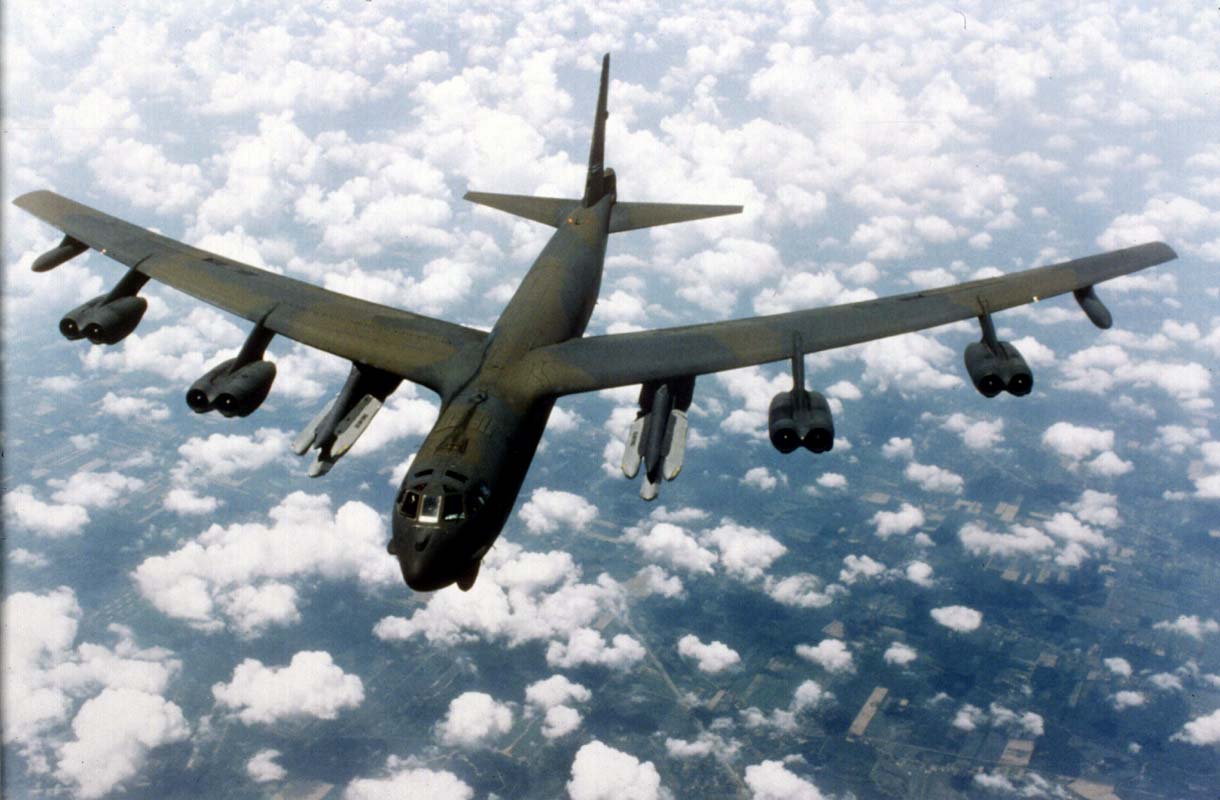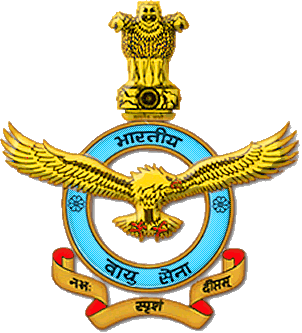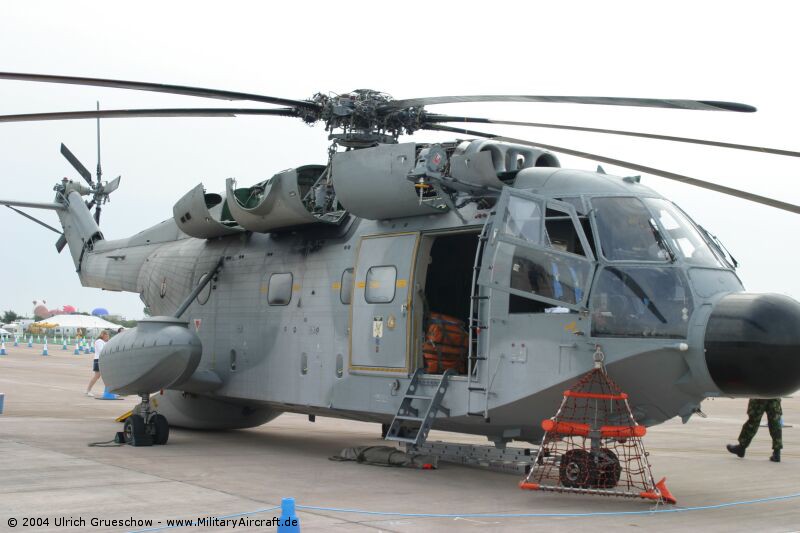A-5M is a single-seat, twin-engine supersonic fighter developed by the Nanchang Aircraft Company of China. Of the 60 aircraft of this class acquired by Pakistan, as of mid-1999 only 49 remained in service. Some are reportedly capable of carrying a single 5-20 kT nuclear bomb. It offers enhanced combat performance particularly at low and super-low altitude. It is the latest renovated type equipped with imported navigation and attack systems. It is used mainly to assist ground troops in attacking concentrated targets on land, key transportation points and ships near the coast. It can also intercept and fight enemy aircraft. It has two WP-6 after burning type of turbojet engines, a fuselage 15,65 meters long, a height of 4.33 meters, and a wingspan of 9,68 meters. Its maximum takeoff load is 11,300 kg. It carries a cannon in each wing, mounted near the fuselage, and it can be loaded with air to air weapons. It can carry bombs and canisters in its hold and various kinds of bombs, rockets and spare fuel tanks in the racks under its wings.
Thursday, September 29, 2011
Tu-22M "BACKFIRE "
The BACKFIRE is a long-range aircraft capable of performing nuclear strike, conventional attack, antiship, and reconnaissance missions. Its low-level penetration features make it a much more survivable system than its predecessors. Carrying either bombs or AS-4/KITCHEN air-to-surface missiles, it is a versatile strike aircraft, believed to be intended for theater attack in Europe and Asia but also potentially capable of intercontinental missions against the United States. The BACKFIRE can be equipped with probes to permit inflight refueling, which would further increase its range and flexibility.
After designing the TU-22, the Tupolev design bureau started working on a new bomber that was based on the TU-22. Initially Tupolev considered modifying the TU-22 by changing the angle of the swept wings and equipping it with more powerful engines. However after developing the design "106" and various analysis, the design did not meet the flight characteristic requirements. Tupolev also developed the design "125". The aircraft was supposed have two VK-6 engines, a range of 4500-4800 km and an operating speed of up to 2500 km/h. The design provided for the use of titanium alloys and advanced electronic systems.
In 1962, the "125" design was examined by the Government but rejected, as the T-4 aircraft designed by KB Sukhoi was accepted. As an alternative to the T-4 aircraft, KB Tupolev developed the "145" airplane which was a modification of the TU-22. This airplane represented a multi-mode supersonic bomber which was capable of flying at subsonic speed at small altitudes and at supersonic speed to overcome air defenses. The range at subsonic speed was supposed to be 6000-7000 km. The wings are swept-back and had a variable geometry to meet the speed and range requirements. The aircraft should carry Kh-22 air-to-surface missiles which had already been deployed on other aircraft. After activities on the T-4 bombers were halted, KB Tupolev was officially charged with building the "145" aircraft in 1967. The new bomber was intended to have a maximum speed of 2300 km/h and a range of 7000 km without refueling. It received the designation TU-22M. The Tu-22M designation was used by the Soviets during SALT-2 arms control negotiations, creating the impression that the Backfire-A aircraft was a modification of the Tu-22 Blinder. This designation was adopted by the US State and Defense Departments, although some contended that the designation was deliberately deceptive, and intended to hide the performace of the Backfire. Other sources suggest the "deception" was internal, because this made it easier to get budgets approved. According to some sources, the Backfire-B/C production variants were believed to be designated Tu-26 by Russia, although this is disputed by many sources. At Tupolev the aircraft was designated the AM.
After designing the TU-22, the Tupolev design bureau started working on a new bomber that was based on the TU-22. Initially Tupolev considered modifying the TU-22 by changing the angle of the swept wings and equipping it with more powerful engines. However after developing the design "106" and various analysis, the design did not meet the flight characteristic requirements. Tupolev also developed the design "125". The aircraft was supposed have two VK-6 engines, a range of 4500-4800 km and an operating speed of up to 2500 km/h. The design provided for the use of titanium alloys and advanced electronic systems.
In 1962, the "125" design was examined by the Government but rejected, as the T-4 aircraft designed by KB Sukhoi was accepted. As an alternative to the T-4 aircraft, KB Tupolev developed the "145" airplane which was a modification of the TU-22. This airplane represented a multi-mode supersonic bomber which was capable of flying at subsonic speed at small altitudes and at supersonic speed to overcome air defenses. The range at subsonic speed was supposed to be 6000-7000 km. The wings are swept-back and had a variable geometry to meet the speed and range requirements. The aircraft should carry Kh-22 air-to-surface missiles which had already been deployed on other aircraft. After activities on the T-4 bombers were halted, KB Tupolev was officially charged with building the "145" aircraft in 1967. The new bomber was intended to have a maximum speed of 2300 km/h and a range of 7000 km without refueling. It received the designation TU-22M. The Tu-22M designation was used by the Soviets during SALT-2 arms control negotiations, creating the impression that the Backfire-A aircraft was a modification of the Tu-22 Blinder. This designation was adopted by the US State and Defense Departments, although some contended that the designation was deliberately deceptive, and intended to hide the performace of the Backfire. Other sources suggest the "deception" was internal, because this made it easier to get budgets approved. According to some sources, the Backfire-B/C production variants were believed to be designated Tu-26 by Russia, although this is disputed by many sources. At Tupolev the aircraft was designated the AM.
Tu-160 "BLACKJACK"
The Tu-160 is a multi-mission strategic bomber designed for operations ranging from subsonic speeds and low altitudes to speeds over Mach 1 at high altitudes. The two weapons bays can accommodate different mission-specific loads, including strategic cruise missiles, short-range guided missiles, nuclear and conventional bombs, and mines. Its basic armament of short-range guided missiles and strategic cruise missiles enables it to deliver nuclear strikes to targets with preassigned coordinates.In the future, after the aircraft is equipped with high-precision conventional weapons it may also be used against mobile or tactical targets.
The Tu-160 was the outcome of a multi-mission bomber competition, which included a Tupolev proposal for an aircraft design using elements of the Tu-144, the Myasishchev M- 18, and the Sukhoi a design based on the T-4 aircraft. The project of Myasishchev was considered to be the most successful, although the Tupolev organization was regarded as having the greatest potential for completing this complex project. Consequently, Tupolev was assigned to develop an aircraft using elements of the Myasishchev M-18 bomber design. The project was supervised by V.N. Binznyuk. Trial operations in the Air Forces began in 1987 with serial production being conducted at the Kazan Aviation Association.
The Tu-160 is characterized by low-mounted, swept-back, and tapered, variable geometry wings with large fixed-center section. The variable geometry wings (from 20 degrees up to 65 degrees) allows flight at supersonic and and subsonic speeds. Four NK-32 TRDDF [turbojet bypass engines with afterburners] of 25,000 kilograms-force power the T-160. The four turbofans, developed by OKB Kuznetsov in 1977, are mounted in pairs under the fixed-center section with square intakes and exhausts extending behind the wings trailing edges. The fuselage's slim structure is marked by a long, pointed, slightly upturned nose section and a stepped canopy. Tail flats are swept-back, tapered, and mid-mounted on the fin. The tail fin is back-tapered with a square tip and a fairing in the leading edge. The tail cone is located past the tail section. During the design of the aircraft, special attention was paid to reducing its signature. Measures were applied to reduce the signature of the engines to infra-red and radar detectors. Tests of these survivability measures were first tested on a TU-95 aircraft in 1980.
As the most powerful combat aircraft of the Soviet Air Forces, the T-160 flies at 2,000 km/hr and can exceed the 2,000 mark with a mission-specific load. The T-160 can climb 60-70 meters per second and reach heights of up 15,000 meters. The bomber can be refueled during flight by IL-78 and ZMS-2 tanker aircraft. The air refueling system consists of a probe and drogue airborne refueling system.
The TU-160 can carry up to 12 Kh-55 long range missiles and Kh-15 short range missiles. The weapons bays can accommodate different loads: carries various bombs: From fee falling nuclear and regular up to 1500 kg bombs. The bomber is not equipped with artillery armament.
The Tu-160 is equipped with a combined navigation-and-weapon aiming system, RID; [radar] for detecting targets on the ground and sea at long distances, an optical-electronic bombsight, an automatic terrain-following system, and active and passive radio-electronic warfare systems, as well as a probe-and-drogue airborne refueling system. It is equipped with K-36DM ejection seats. The cockpit instruments are the traditional electromechanical type. The aircraft is controlled with the aid of a central control column. The engine control throttles are located between the pilots' seats. There is a rest area, a toilet, and a cupboard for warming up food.
The Tu-160 was the outcome of a multi-mission bomber competition, which included a Tupolev proposal for an aircraft design using elements of the Tu-144, the Myasishchev M- 18, and the Sukhoi a design based on the T-4 aircraft. The project of Myasishchev was considered to be the most successful, although the Tupolev organization was regarded as having the greatest potential for completing this complex project. Consequently, Tupolev was assigned to develop an aircraft using elements of the Myasishchev M-18 bomber design. The project was supervised by V.N. Binznyuk. Trial operations in the Air Forces began in 1987 with serial production being conducted at the Kazan Aviation Association.
The Tu-160 is characterized by low-mounted, swept-back, and tapered, variable geometry wings with large fixed-center section. The variable geometry wings (from 20 degrees up to 65 degrees) allows flight at supersonic and and subsonic speeds. Four NK-32 TRDDF [turbojet bypass engines with afterburners] of 25,000 kilograms-force power the T-160. The four turbofans, developed by OKB Kuznetsov in 1977, are mounted in pairs under the fixed-center section with square intakes and exhausts extending behind the wings trailing edges. The fuselage's slim structure is marked by a long, pointed, slightly upturned nose section and a stepped canopy. Tail flats are swept-back, tapered, and mid-mounted on the fin. The tail fin is back-tapered with a square tip and a fairing in the leading edge. The tail cone is located past the tail section. During the design of the aircraft, special attention was paid to reducing its signature. Measures were applied to reduce the signature of the engines to infra-red and radar detectors. Tests of these survivability measures were first tested on a TU-95 aircraft in 1980.
As the most powerful combat aircraft of the Soviet Air Forces, the T-160 flies at 2,000 km/hr and can exceed the 2,000 mark with a mission-specific load. The T-160 can climb 60-70 meters per second and reach heights of up 15,000 meters. The bomber can be refueled during flight by IL-78 and ZMS-2 tanker aircraft. The air refueling system consists of a probe and drogue airborne refueling system.
The TU-160 can carry up to 12 Kh-55 long range missiles and Kh-15 short range missiles. The weapons bays can accommodate different loads: carries various bombs: From fee falling nuclear and regular up to 1500 kg bombs. The bomber is not equipped with artillery armament.
The Tu-160 is equipped with a combined navigation-and-weapon aiming system, RID; [radar] for detecting targets on the ground and sea at long distances, an optical-electronic bombsight, an automatic terrain-following system, and active and passive radio-electronic warfare systems, as well as a probe-and-drogue airborne refueling system. It is equipped with K-36DM ejection seats. The cockpit instruments are the traditional electromechanical type. The aircraft is controlled with the aid of a central control column. The engine control throttles are located between the pilots' seats. There is a rest area, a toilet, and a cupboard for warming up food.
Wednesday, September 28, 2011
F-35
The F-35 is the result of the Defense Department's Joint Strike Fighter (JSF) program, which sought to build a multirole fighter optimized for the air-to-ground role with secondary air-to-air capability. The JSF requirement was to meet the needs of the Air Force, Navy, Marine Corps and allies, with improved survivability, precision engagement capability, and reduced life cycle costs. By using many of the same technologies developed for the F-22, the F-35 has the opportunity to capitalize on commonality and modularity to maximize affordability.
The Lockheed Martin X-35 was chosen over the competing Boeing X-32 primarily because of Lockheed’s lift-fan STOVL design, which proved superior to the Boeing vectored-thrust approach. The lift fan, which is powered by the aircraft engine via a clutched driveshaft, was technically challenging but DoD concluded that Lockheed has the technology in hand. The lift fan has significant excess power which could be critical given the weight gain that all fighter aircraft experience.
Lockheed Martin developed four versions of the Joint Strike Fighter to fulfill the needs of the Navy, Marine Corps, Army, Air Force and the United Kingdom Royal Air Force and Navy. All versions have the same fuselage and internal weapons bay, common outer mold lines with similar structural geometries, identical wing sweeps, and comparable tail shapes. The weapons are stored in two parallel bays located aft of the main landing gear. The canopy, radar, ejection system, subsystems, and avionics are all common among all different version as is the core engine which is based on the F119 by Pratt & Whitney.
Additional systems on the F-35 include:
The Lockheed Martin X-35 was chosen over the competing Boeing X-32 primarily because of Lockheed’s lift-fan STOVL design, which proved superior to the Boeing vectored-thrust approach. The lift fan, which is powered by the aircraft engine via a clutched driveshaft, was technically challenging but DoD concluded that Lockheed has the technology in hand. The lift fan has significant excess power which could be critical given the weight gain that all fighter aircraft experience.
Lockheed Martin developed four versions of the Joint Strike Fighter to fulfill the needs of the Navy, Marine Corps, Army, Air Force and the United Kingdom Royal Air Force and Navy. All versions have the same fuselage and internal weapons bay, common outer mold lines with similar structural geometries, identical wing sweeps, and comparable tail shapes. The weapons are stored in two parallel bays located aft of the main landing gear. The canopy, radar, ejection system, subsystems, and avionics are all common among all different version as is the core engine which is based on the F119 by Pratt & Whitney.
Additional systems on the F-35 include:
- Northrup Grumman advanced electronically scanned array (AESA) multi-function radar
- Snader/Litton Amecon electronic countermeasures equipment
- Lockheed Martin electro-optical targeting system
- Northrup Grumman distributed aperture infrared sensor (DAIRS) thermal imaging system
- Vision Systems International advanced helmet-mounted display
F-117A Nighthawk
The F-117A Nighthawk is the world's first operational aircraft designed to exploit low-observable stealth technology. The unique design of the single-seat F-117A provides exceptional combat capabilities. About the size of an F-15 Eagle, the twin-engine aircraft is powered by two General Electric F404 turbofan engines and has quadruple redundant fly-by-wire flight controls. Air refuelable, it supports worldwide commitments and adds to the deterrent strength of the U.S. military forces.
The F-117A can employ a variety of weapons and is equipped with sophisticated navigation and attack systems integrated into a state-of-the-art digital avionics suite that increases mission effectiveness and reduces pilot workload. Detailed planning for missions into highly defended target areas is accomplished by an automated mission planning system developed, specifically, to take advantage of the unique capabilities of the F-117A.Streamlined management by Aeronautical Systems Center, Wright-Patterson AFB, Ohio, combined breakthrough stealth technology with concurrent development and production to rapidly field the aircraft. The F-117A program has demonstrated that a stealth aircraft can be designed for reliability and maintainability. The aircraft maintenance statistics are comparable to other tactical fighters of similar complexity. Logistically supported by Sacramento Air Logistics Center, McClellan AFB, Calif., the F-117A is kept at the forefront of technology through a planned weapon system improvement program located at USAF Plant 42 at Palmdale, Calif. The Air Force thinking today is that it will phase out the Nighthawks after 2018.
The F-117A can employ a variety of weapons and is equipped with sophisticated navigation and attack systems integrated into a state-of-the-art digital avionics suite that increases mission effectiveness and reduces pilot workload. Detailed planning for missions into highly defended target areas is accomplished by an automated mission planning system developed, specifically, to take advantage of the unique capabilities of the F-117A.Streamlined management by Aeronautical Systems Center, Wright-Patterson AFB, Ohio, combined breakthrough stealth technology with concurrent development and production to rapidly field the aircraft. The F-117A program has demonstrated that a stealth aircraft can be designed for reliability and maintainability. The aircraft maintenance statistics are comparable to other tactical fighters of similar complexity. Logistically supported by Sacramento Air Logistics Center, McClellan AFB, Calif., the F-117A is kept at the forefront of technology through a planned weapon system improvement program located at USAF Plant 42 at Palmdale, Calif. The Air Force thinking today is that it will phase out the Nighthawks after 2018.
AV-8B Harrier
The AV-8B V/STOL strike aircraft was designed to replace the AV-8A and the A-4M light attack aircraft. The Marine Corps requirement for a V/STOL light attack force has been well documented since the late 1950's. Combining tactical mobility, responsiveness, reduced operating cost and basing flexibility, both afloat and ashore, V/STOL aircraft are particularly well-suited to the special combat and expeditionary requirements of the Marine Corps. The AV-8BII+ features the APG-65 Radar common to the F/A-18, as well as all previous systems and features common to the AV-8BII.
The mission of the VMA STOVL squadron is to attack and destroy surface and air targets, to escort helicopters, and to conduct other such air operations as may be directed. Specific tasks of the AV-8B HARRIER II include:
The mission of the VMA STOVL squadron is to attack and destroy surface and air targets, to escort helicopters, and to conduct other such air operations as may be directed. Specific tasks of the AV-8B HARRIER II include:
- Conduct close air support using conventional and specific weapons.
- Conduct deep air support, to include armed reconnaissance and air interdiction, using conventional and specific weapons.
- Conduct offensive and defensive antiair warfare. This includes combat air patrol, armed escort missions, and offensive missions against enemy ground-to-air defenses, all within the capabilities of the aircraft.
- Be able to operate and deliver ordnance at night and to operate under instrument flight conditions.
- Be able to deploy for extended operations employing aerial refueling.
- Be able to deploy to and operate from carriers and other suitable seagoing platforms, advanced bases, expeditionary airfields, and remote tactical landing sites.
A-4 Skyhawk
The Marine Corps A-4 Skyhawk is a lightweight, single engine attack aircraft. The mission of an A-4 attack squadron is to attack and to destroy surface targets in support of the landing force commander, escort helicopters, and conduct other operations as directed. Developed in the early 1950s, the A-4 Skyhawk was originally designated the A-4D as a lightweight, daylight only nuclear capable strike aircraft for use in large numbers from aircraft carriers. There are numerous models of the A-4 in use. The A-4M and the TA-4F are currently used by Marine Corps Reserve squadrons. All models have two internally mounted 20mm (.8 inch) cannons, and are capable of delivering conventional and nuclear weapons under day and night visual meteorological conditions. The A-4M uses a heads-up display and computer aided delivery of its bomb load with the angle rate bombing system. The Marine Reserve has two squadrons of A-4s with 12 aircraft each. Additionally, each squadron has two TA-4 aircraft.
AH-1W Super Cobra
The AH-1 is fully capable of performing its attack mission in all weather conditions. Additional missions include direct air support, antitank, armed escort, and air to air combat. The TOW missile targeting system uses a telescopic sight unit (traverse 110º, elevation 60º/+30º), a laser augmented tracking capability, thermal sights and a FLIR to allow for acquisition, launch, and tracking of all types of TOW missiles in all weather conditions. The Cobra also uses a digital ballistic computer, a HUD, Doppler nav, and a low speed air data sensor on the starboard side for firing, and has in-flight boresighting. External stores are mounted on underwing external stores points. Each wing has two hardpoints for a total of four stations. A representative mix when targeting armor formations would be eight TOW missiles, two 2.75-in rocket pods, and 750x 20-mm rounds. The gun must be centered before firing underwing stores. Armored cockpit can withstand small arms fire, and composite blades and tailboom are able withstand damage from 23-mm cannon hits.small arms fire, and composite blades and tailboom able to withstand damage from 23-mm cannon hits. The Marines depend on attack helicopters to provide close-in fire support coordination in serial and ground escort operations. Such support is required during amphibious ship-to-shore movements and subsequent shore operations within the objective area. AH-1 is designed for the following tasks:
- Armed escort for helicopters carrying personnel and cargo
- Landing zone fire suppression support
- Visual armed reconnaissance
- Target marking and direction for high-performance attack aircraft
- Convoy escort and fire suppression for ground units
- Operations from air capable ships
- Point target attack of threatening armor
- Self-defense and protection of helicopters carrying personnel and cargo from threatening air-to-air weapon-equipped helicopters
P-3 Orion
The P-3C is a land-based, long range anti-submarine warfare (ASW) patrol aircraft. It has advanced submarine detection sensors such as directional frequency and ranging (DIFAR) sonobuoys and magnetic anomaly detection (MAD) equipment. The avionics system is integrated by a general purpose digital computer that supports all of the tactical displays, monitors and automatically launches ordnance and provides flight information to the pilots. In addition, the system coordinates navigation information and accepts sensor data inputs for tactical display and storage. The P-3C can either operate alone or supporting many different customers including the carrier battlegroup and amphibious readiness group. The aircraft can carry a variety of weapons internally and on wing pylons, such as the Harpoon anti-surfacemissile, the MK-50 torpedo and the MK-60 mine.
Each Maritime Patrol Aviation (MPA) squadron has nine aircraft and is manned by approximately 60 officers and 250 enlisted personnel. Each 11-person crew includes both officer and enlisted personnel. The MPA squadrons deploys to sites outside the United States for approximately six months, and generally spends one year training at home between deployments.
In February 1959, the Navy awarded Lockheed a contract to develop a replacement for the aging P-2 Neptune. The P-3V Orion entered the inventory in July 1962, and over 30 years later it remains the Navy's sole land-based antisubmarine warfare aircraft. It has gone through one designation change (P-3V to P-3) and three major models: P-3A, P-3B, and P-3C, the latter being the only one now in active service. The last Navy P-3 came off the production line at the Lockheed plant in April 1990.Since its introduction in 1969, the P-3C has undergone a series of configuration changes to implement improvements in various mission and aircraft systems through updates to the aircraft. These changes have usually been implemented in blocks referred to as "Updates." Update I, introduced in 1975, incorporated new data processing avionics and software, while Update II in 1977 featured an infrared detection system, a sonobuoy reference system, the Harpoon antiship missile and a 28-channel magnetic tape recorder/reproducer.
Each Maritime Patrol Aviation (MPA) squadron has nine aircraft and is manned by approximately 60 officers and 250 enlisted personnel. Each 11-person crew includes both officer and enlisted personnel. The MPA squadrons deploys to sites outside the United States for approximately six months, and generally spends one year training at home between deployments.
In February 1959, the Navy awarded Lockheed a contract to develop a replacement for the aging P-2 Neptune. The P-3V Orion entered the inventory in July 1962, and over 30 years later it remains the Navy's sole land-based antisubmarine warfare aircraft. It has gone through one designation change (P-3V to P-3) and three major models: P-3A, P-3B, and P-3C, the latter being the only one now in active service. The last Navy P-3 came off the production line at the Lockheed plant in April 1990.Since its introduction in 1969, the P-3C has undergone a series of configuration changes to implement improvements in various mission and aircraft systems through updates to the aircraft. These changes have usually been implemented in blocks referred to as "Updates." Update I, introduced in 1975, incorporated new data processing avionics and software, while Update II in 1977 featured an infrared detection system, a sonobuoy reference system, the Harpoon antiship missile and a 28-channel magnetic tape recorder/reproducer.
B-1B Lancer
The B-1B is a multi-role, long-range bomber, capable of flying intercontinental missions without refueling, then penetrating present and predicted sophisticated enemy defenses. It can perform a variety of missions, including that of a conventional weapons carrier for theater operations. Through 1991, the B-1 was dedicated to the nuclear deterrence role as part of the single integrated operational plan (SIOP)
The B-1B's electronic jamming equipment, infrared countermeasures, radar location and warning systems complement its low-radar cross-section and form an integrated defense system for the aircraft.
The swing-wing design and turbofan engines not only provide greater range and high speed at low levels but they also enhance the bomber's survivability. Wing sweep at the full-forward position allows a short takeoff roll and a fast base-escape profile for airfields under attack. Once airborne, the wings are positioned for maximum cruise distance or high-speed penetration. The B-1B holds several world records for speed, payload and distance. The National Aeronautic Association recognized the B-1B for completing one of the 10 most memorable record flights for 1994.
The B-1B uses radar and inertial navigation equipment enabling aircrews to globally navigate, update mission profiles and target coordinates in-flight, and precision bomb without the need for ground based navigation aids. Included in the B-1B offensive avionics are modular electronics that allow maintenance personnel to precisely identify technical difficulties and replace avionics components in a fast, efficient manner on the ground.
The aircraft's AN/ALQ 161A defensive avionics is a comprehensive electronic counter-measures package that detects and counters enemy radar threats. It also has the capability to detect and counter missiles attacking from the rear. It defends the aircraft by applying the appropriate counter-measures, such as electronic jamming or dispensing expendable chaff and flares. Similar to the offensive avionics, the defensive suite has a re-programmable design that allows in-flight changes to be made to counter new or changing threats.
The B-1B represents a major upgrade in U.S. long-range capabilities over the B-52 -- the previous mainstay of the bomber fleet. Significant advantages include:
The B-1B's electronic jamming equipment, infrared countermeasures, radar location and warning systems complement its low-radar cross-section and form an integrated defense system for the aircraft.
The swing-wing design and turbofan engines not only provide greater range and high speed at low levels but they also enhance the bomber's survivability. Wing sweep at the full-forward position allows a short takeoff roll and a fast base-escape profile for airfields under attack. Once airborne, the wings are positioned for maximum cruise distance or high-speed penetration. The B-1B holds several world records for speed, payload and distance. The National Aeronautic Association recognized the B-1B for completing one of the 10 most memorable record flights for 1994.
The B-1B uses radar and inertial navigation equipment enabling aircrews to globally navigate, update mission profiles and target coordinates in-flight, and precision bomb without the need for ground based navigation aids. Included in the B-1B offensive avionics are modular electronics that allow maintenance personnel to precisely identify technical difficulties and replace avionics components in a fast, efficient manner on the ground.
The aircraft's AN/ALQ 161A defensive avionics is a comprehensive electronic counter-measures package that detects and counters enemy radar threats. It also has the capability to detect and counter missiles attacking from the rear. It defends the aircraft by applying the appropriate counter-measures, such as electronic jamming or dispensing expendable chaff and flares. Similar to the offensive avionics, the defensive suite has a re-programmable design that allows in-flight changes to be made to counter new or changing threats.
The B-1B represents a major upgrade in U.S. long-range capabilities over the B-52 -- the previous mainstay of the bomber fleet. Significant advantages include:
- Low radar cross-section to make detection considerably more difficult.
- Ability to fly lower and faster while carrying a larger payload.
- Advanced electronic countermeasures to enhance survivability.
B-52H "BUFF"
The B-52H BUFF [Big Ugly Fat Fellow] is the primary nuclear roled bomber in the USAF inventory. It provides the only Air Launch Cruise Missile carriage in the USAF. The B-52H also provides theater CINCs with a long range strike capability. The bomber is capable of flying at high subsonic speeds at altitudes up to 50,000 feet (15,166.6 meters). It can carry nuclear or conventional ordnance with worldwide precision navigation capability.
The aircraft's flexibility was evident during the Vietnam War and, again, in Operation Desert Storm. B-52s struck wide-area troop concentrations, fixed installations and bunkers, and decimated the morale of Iraq's Republican Guard. The Gulf War involved the longest strike mission in the history of aerial warfare when B-52s took off from Barksdale Air Force Base, La., launched conventional air launched cruise missiles and returned to Barksdale -- a 35-hour, non-stop combat mission.
A total of 744 B-52s were built with the last, a B-52H, delivered in October 1962. Only the H model is still in the Air Force inventory and all are assigned to Air Combat Command. The first of 102 B-52H's was delivered to Strategic Air Command in May 1961. The H model can carry up to 20 air launched cruise missiles. In addition, it can carry the conventional cruise missile which was launched from B-52G models during Desert Storm.Barksdale AFB, LA and Minot AFB, ND serves as B-52 Main Operating Bases (MOB). Training missions are flown from both MOBs. Barksdale AFB and Minot AFB normally supports 57 and 36 aircraft respectively on-station.
The aircraft's flexibility was evident during the Vietnam War and, again, in Operation Desert Storm. B-52s struck wide-area troop concentrations, fixed installations and bunkers, and decimated the morale of Iraq's Republican Guard. The Gulf War involved the longest strike mission in the history of aerial warfare when B-52s took off from Barksdale Air Force Base, La., launched conventional air launched cruise missiles and returned to Barksdale -- a 35-hour, non-stop combat mission.
A total of 744 B-52s were built with the last, a B-52H, delivered in October 1962. Only the H model is still in the Air Force inventory and all are assigned to Air Combat Command. The first of 102 B-52H's was delivered to Strategic Air Command in May 1961. The H model can carry up to 20 air launched cruise missiles. In addition, it can carry the conventional cruise missile which was launched from B-52G models during Desert Storm.Barksdale AFB, LA and Minot AFB, ND serves as B-52 Main Operating Bases (MOB). Training missions are flown from both MOBs. Barksdale AFB and Minot AFB normally supports 57 and 36 aircraft respectively on-station.
Lockheed SR-71 "Blackbird"
The Lockheed SR-71 "Blackbird" was an advanced, long-range, Mach 3+ strategic reconnaissance aircraft. It was developed as a black project from the Lockheed A-12 reconnaissance aircraft in the 1960s by the Lockheed Skunk Works. Clarence "Kelly" Johnson was responsible for many of the design's innovative concepts. During reconnaissance missions the SR-71 operated at high speeds and altitudes to allow it to outrace threats. If a surface-to-air missile launch was detected, the standard evasive action was simply to accelerate and outrun the missile.
The SR-71 served with the U.S. Air Force from 1964 to 1998. Although 12 of the 32 aircraft built were destroyed in accidents, none were lost to enemy action. The SR-71 was unofficially named the Blackbird, and called the Habu by its crews, referring to an Okinawan species of pit viper. Since 1976, it has held the world record for the fastest air-breathing manned aircraft, a record previously held by the YF-12.
The SR-71 served with the U.S. Air Force from 1964 to 1998. Although 12 of the 32 aircraft built were destroyed in accidents, none were lost to enemy action. The SR-71 was unofficially named the Blackbird, and called the Habu by its crews, referring to an Okinawan species of pit viper. Since 1976, it has held the world record for the fastest air-breathing manned aircraft, a record previously held by the YF-12.
Monday, September 26, 2011
CROTALE NG (anti aircraft system)
The CROTALE NG anti-aircraft system is of French origin.It is a mobile, all-weather, short-range anti-aircraft system (SHORAD) comprised of a search and track RADAR, a FLIR system, a fire-control system and a multiple missile launcher.
The system can provide anti-aircraft defense capability to tactical and strategic assets by engaging targetsin low and very low altitudes. The system is wholly contained in an autonomous towable vehicle. It's RADAR and FLIR range is 20KM (search and track) and the missiles are contained in two quadruple launchers.
Patriot PAC-III (anti aircraft system)
The PATRIOT PAC-III system is of American origin and has been operational with AHF since 2003.
It is a mobile long range anti-aircraft system with a search radar range of 170Km and maximum engagement range of 150Km.
It's main components are:
It is a mobile long range anti-aircraft system with a search radar range of 170Km and maximum engagement range of 150Km.
It's main components are:
- Information Coordination Center (ICC).
- Radar Set
- Engagement Control Station (ECS).
- Launching Stations.
A-7 Corsair II
The A-7 Corsair II is a carrier-based subsonic light attack aircraft introduced to replace the United States Navy's Douglas A-4 Skyhawk, initially entering service during the Vietnam War. The Corsair II was later adopted by the United States Air Force, to include the Air National Guard, to replace the Douglas A-1 Skyraider, North American F-100 Super Sabre and Republic F-105 Thunderchief. The aircraft was also exported to Greece in the 1970s, and Portugal and Thailand in the late 1980s. The A-7 airframe design was based on the successful supersonic Vought F-8 Crusader. It was one of the first combat aircraft to feature a head-up display (HUD), an inertial navigation system (INS), and a turbofan engineIn 1962, the United States Navy began preliminary work on VAX (Heavier-than-air, Attack, Experimental), a replacement for the A-4 Skyhawk with greater range and payload. A particular emphasis was placed on accurate delivery of weapons to reduce the cost per target. The requirements were finalized in 1963, announcing the VAL (Heavier-than-air, Attack, Light) competition.[1] The USAF philosophy was to employ only supersonic fighter-bombers such as the F-105 Thunderchief and F-100 Super Sabre. However, the Navy felt that a subsonic design could carry the more payload the farthest distance, due to the lower fuel burn rate from avoiding supersonic flight.
The first A-7 mock-up in 1964.
Sunday, September 25, 2011
Subscribe to:
Posts (Atom)





